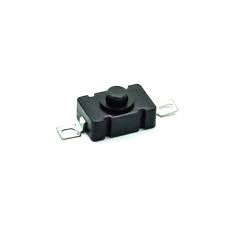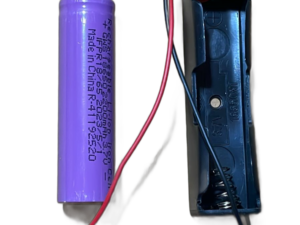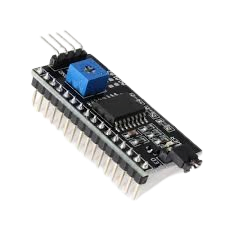On Off Push Button Switch (Pack of 5)
86 in stock
The On/Off Push Button Switch is a simple, reliable component used to control electrical devices by toggling between ON and OFF states. It typically features durable construction, easy operation, and is used in consumer electronics, industrial equipment, automotive controls, and DIY projects for straightforward and effective control.
₹34.93 ₹64.90 (Incl. GST)
86 in stock
On Off Push Button Switch
Introduction
The On/Off Push Button Switch is a simple, reliable component used to control the operation of electrical devices by toggling between two states: ON and OFF. Its straightforward design makes it a popular choice for a wide range of applications, from consumer electronics to industrial machinery.
Specifications
- Electrical Ratings
- Current Rating: Typically ranges from 1A to 10A, accommodating various electrical loads.
- Voltage Rating: Commonly rated for 12V, 24V DC, or 120V, 240V AC, depending on the application and required power handling.
- Mechanical Characteristics
- Actuation Force: Generally between 1N and 5N, providing a comfortable push for users.
- Travel Distance: The distance the button moves when pressed, usually around 1mm to 3mm.
- Switch Configuration
- On/Off Operation: Features a single push button that toggles between the ON and OFF states with each press.
- Momentary vs. Latching:
- Momentary: Returns to the default position after being released, often used for temporary actions.
- Latching: Stays in the new position after being pressed, used for toggling functions on or off.
Construction and Design
- Housing
- Material: Made from durable materials like plastic or metal, designed to withstand regular use and environmental factors.
- Ergonomic Design: Includes a button shape and size that ensure easy pressing and clear feedback on the switch status.
- Actuator Mechanism
- Push Button: Provides an intuitive interface for controlling devices, with a clear tactile response when engaged.
- Illumination: Some models feature built-in LEDs to indicate the switch status, useful in low-light conditions.
- Internal Contacts
- Material: Typically made from copper or silver to ensure reliable electrical conductivity.
- Configuration: Designed to handle the switch’s electrical ratings and provide consistent performance.
Applications
- Consumer Electronics
- Home Appliances: Used in devices like lamps, coffee makers, and kitchen appliances.
- Personal Electronics: Found in gadgets such as calculators, remote controls, and audio equipment.
- Industrial Equipment
- Control Panels: Manages machinery functions and system operations.
- Safety Systems: Employed in emergency stop mechanisms and other critical control applications.
- Automotive
- Dashboard Controls: Operates functions like headlights, horns, and other vehicle features.
- DIY Projects
- Electronics Prototyping: Used in custom circuit designs and hobbyist projects for simple on/off control.
Advantages
- Simplicity
- Ease of Use: Provides a straightforward interface for controlling electrical devices.
- Intuitive Operation: Simple design ensures easy understanding and use.
- Reliability
- Durable Construction: Built to withstand frequent use and various environmental conditions.
- Consistent Performance: Offers dependable operation over time, even with heavy usage.
- Versatility
- Wide Range of Applications: Suitable for various devices and systems, from home electronics to industrial machinery.
- Multiple Configurations: Available in different styles and ratings to meet diverse needs.
Conclusion
The On/Off Push Button Switch is an essential component for controlling electrical devices, providing a reliable and user-friendly interface. Its simple design, robust construction, and versatility make it ideal for a range of applications, including consumer electronics, industrial systems, automotive controls, and DIY projects. Whether momentary or latching, this switch ensures effective operation and easy control in various settings.
| Weight | 0.00 kg |
|---|---|
| Dimensions | 0.00 × 0.00 × 0.00 cm |





